Perennial flowers for a summer residence

Perennial flowers can be a real decoration for a summer cottage or a personal plot. Knowing the names of non-capricious garden plants that can decorate flower beds and flower beds for more than one season, you can easily pick them up by combining them according to seasons, shades of petals or other signs. To understand what perennials can be planted in August and spring, in the Urals and in other regions, a detailed overview of the most popular species will help.
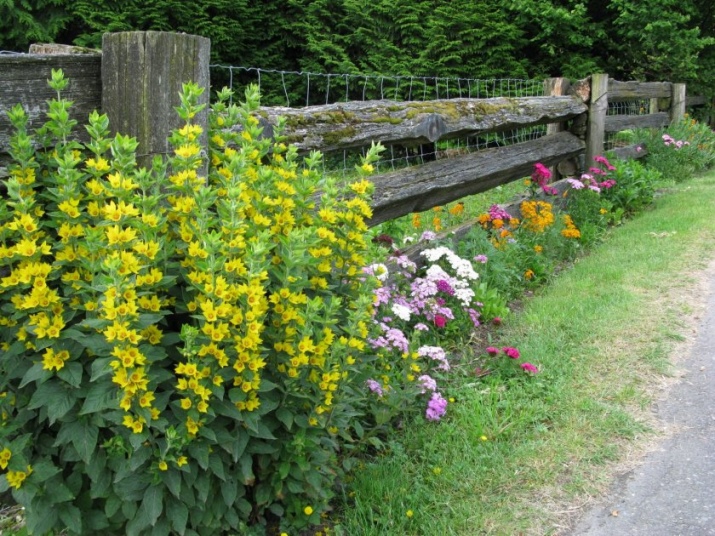
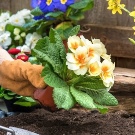
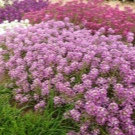

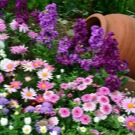

Garden perennials blooming in spring
The earliest plants - spring perennials - begin their flowering as soon as the snow melts. The most popular here are decorative tuberous species that awaken with the arrival of heat. Choosing them for a summer residence, you can give the landscape of the site a spring mood.
Perennial plants are unpretentious, they do not have to be removed for the winter - in most cases, you can leave the bulbs in the soil.
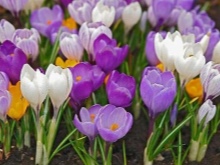
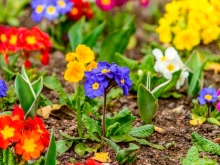
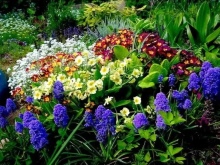
The most popular perennial flowering spring species are familiar to most gardeners.
- Crocuses. A lilac flower with yellow stamens is often mistakenly referred to as a snowdrop. Indeed, crocus buds are among the first to appear in the garden, already in March.
Contrary to popular belief, they are not only lilac, but also white, yellow, well suited for the formation of small beds and flower beds.
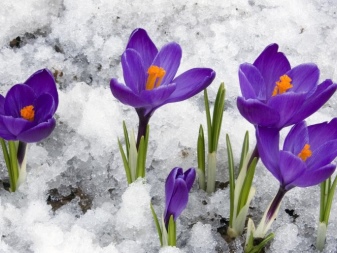
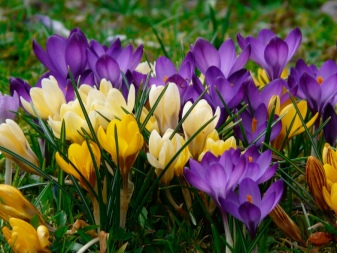
- Primroses. Fully justifying their name, these rosette plants are already one of the first to be covered with lush flower caps in April. The variety of primrose shades is striking - it varies from white and yellow to lilac and pink. Once every 4 years, the bushes that have managed to grow are separated and planted.
Interestingly, primrose is capable of re-blooming during warm autumn periods.
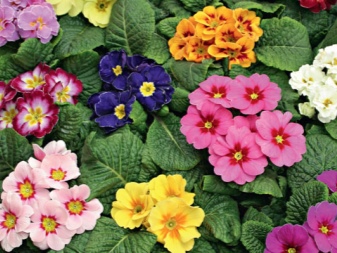
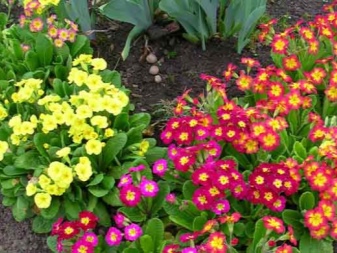
- Tulips. The main flowers of European gardens and parks feel great in the Russian climate. Yellow, red, purple, crimson buds appear on flower beds in the first month of spring, retaining their beauty until summer days. Tulips are unpretentious; even an inexperienced summer resident can grow them.
The only thing worth considering is that when wintering in the ground, the bulbs may need additional shelter.
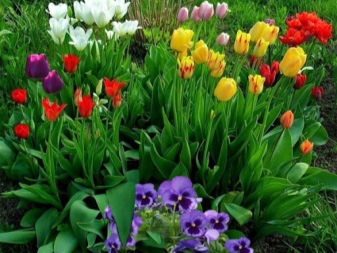

- Hyacinths. This perennial plant is loved for its variety of colors from snow-white to black-purple, lush and abundant flowering, delicate aroma. The buds are formed with the onset of warm spring days.
When planting hyacinths, it should be borne in mind that the plants are sensitive to drafts, they are recommended to be planted in places protected from the wind.
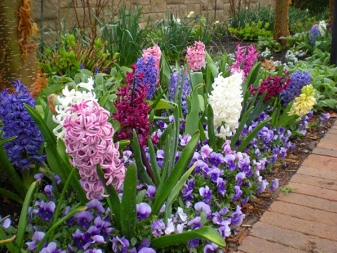
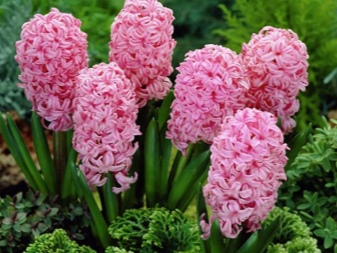
- Daffodils. Sunny yellow flowers with an orange center appear in flower beds in April. Plants are bulbous and do not require digging for the winter. Daffodils have a characteristic aroma that repels many pests. That is why they are often used as a curb plant in the garden, placing them on the borders of the beds or between them.
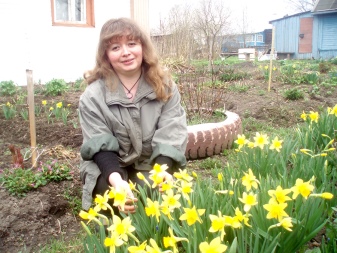
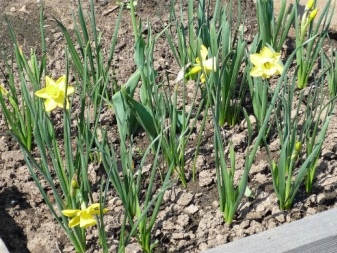
- Garden lump. Plants form clumps up to 30 cm high, which are covered with flowers in April. They are pink at first, then purple and blue.
The lungwort has beautiful speckled leaves, retains decorativeness from spring to late autumn, if you place its planting on a shaded area.

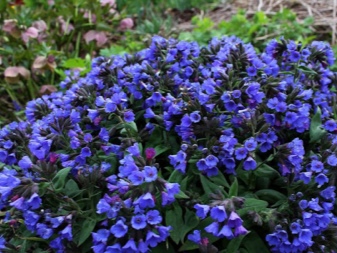
- Daisies. It is a re-flowering species with low shoot height.It reproduces easily by self-seeding, unpretentious in cultivation. Daisies can have simple or double flowers - both very small and large. The color may change over time.
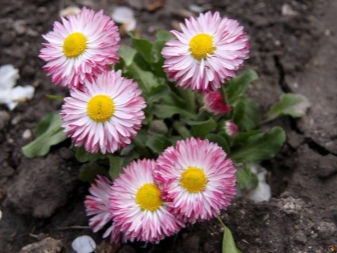

This is just a small part of the plants that can be used to decorate a summer cottage in spring. With the right planting time, the flower beds will not be empty without flowers until the very summer.
And also it is worth taking note of the following perennials: anemones, delphiniums, catchment, peonies, garden daisies.
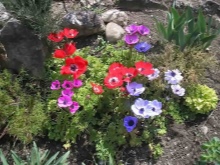
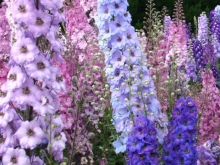
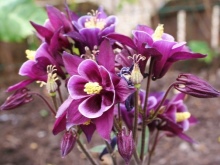
Plants blooming all summer
Types of flowering plants that are capable of maintaining an elegant, decorative look throughout the summer are especially loved by summer residents. Among them there are climbing options for the arch, as well as low ones for ridges and alpine slides, moisture-loving ones for decorating reservoirs. Non-capricious summer plants for continuous flowering are easily selected for both sunny areas and shady places. There are also universal species that can endure even the most unfavorable climatic conditions for a long time.
The names of flowers suitable for summer cultivation are well known to most summer residents. Among them are the unpretentious beautiful telekia, the modest cornflower, luxurious lilies and roses.
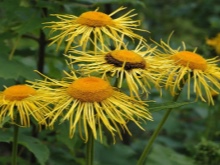
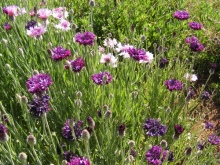
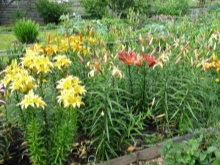
Sun-loving
This group includes drought-resistant plants that need a lot of sun. It is in the summer that the garden is decorated with the most lush and beautiful flowers, suitable for cutting into bouquets. The description of the most popular of them deserves special attention.
- Lilies. Bulbous perennials, in cold climates requiring digging for the winter or additional shelter. The plant does not really like transplants, it has a wide variety of colors of petals, a sweet and tart aroma.
In the first year, it is recommended to cut the buds to stimulate their more abundant formation in subsequent seasons.

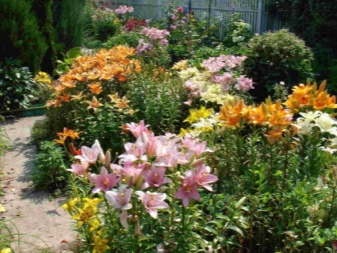
- Gladioli. A bulbous plant with large spike-shaped inflorescences adorns the cottage since the second half of summer. The best place to plant is sunny, well-ventilated areas with sandy soil. Gladioli are distinguished by a wide variety of colors, there are terry varieties.
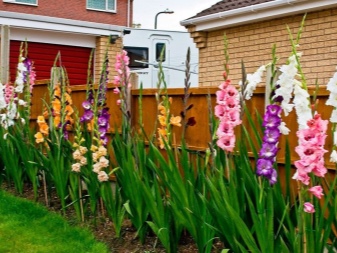

- Roses. Shrub, standard, climbing rose - this plant is considered the queen of gardens. At the dacha, rose bushes require pre-winter pruning, shelter. The variety of colors, sizes and shapes allows these flowers to be used to decorate plots in different styles.


- Clematis. These plants belong to climbing vines, which feel great near hedges, retaining walls. The color of the petals is quite varied - from deep purple to pale blue.
Perennials are planted with shoots, on light soils, immediately providing for the presence of a support. For the winter, the lashes are cut, bent to the ground, covered.
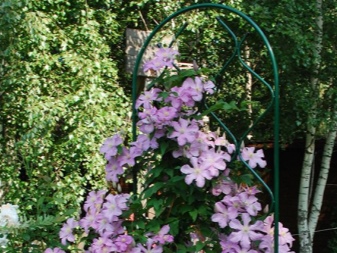
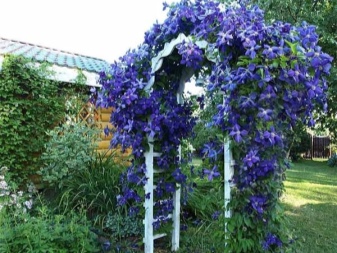
- Doronicum. This unpretentious flower pleases with its bright color already at the beginning of summer. Sun-yellow "daisies" grow on stems from 30 to 80 cm high, in a strong shade they feel bad, need a lot of sun.
The downside of this species is the wilting of the foliage at the end of flowering.
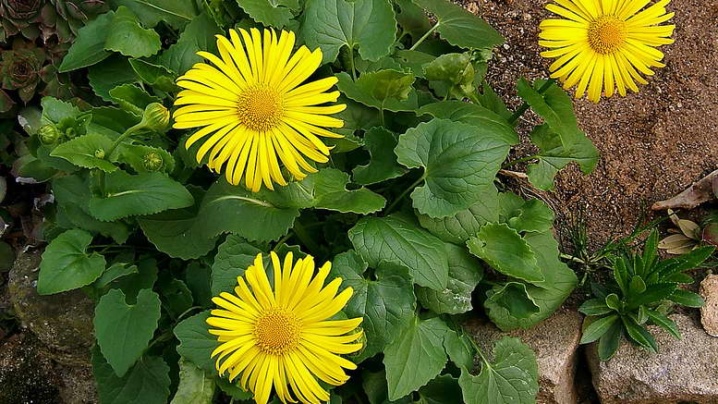
- Perennial cornflower. Pink and blue flowers, retaining the characteristic shape of their wild counterpart, are very popular when grown in mixborders. They are drought-resistant, unpretentious in the choice of soil type.
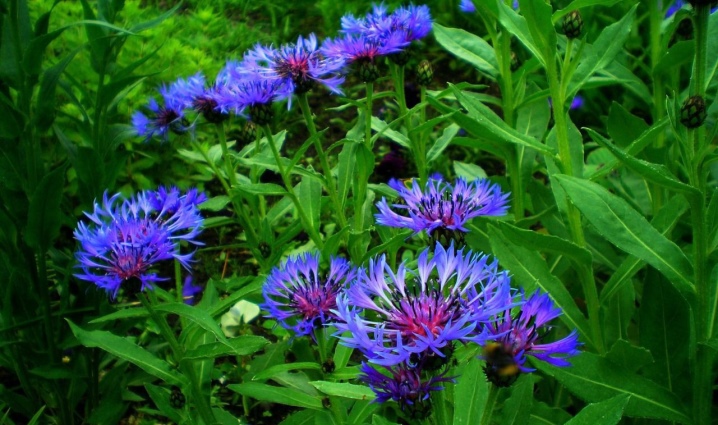
- Turkish carnation. This species sets the tone for all summer cottages already in June, retains its decorative effect all summer long.
Especially popular are the multicolored varieties of Turkish carnations, which thrive in sunny areas.

- Lupine. A beautifully flowering plant with a lush plume of petals. This species is sun-loving, as unpretentious as possible, the color can be pink, purple, white. Lupins grow easily by self-seeding and can occupy large areas of the site.

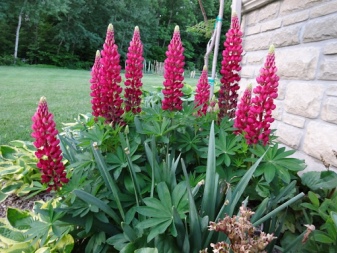
And also among the summer dacha perennials, poppies, irises can be distinguished, demonstrating decorativeness during flowering, easily adapting to different types of soils. You can decorate the site with useful plants that are distinguished by beautiful flowering. This includes oregano, monarda, calendula.
For shady places
Even in areas not flooded with sunlight, you can create a beautiful flower garden. Shady places are well suited for moisture-loving plants that feel great away from the scorching rays of the heavenly body.
Such species are characterized by lush, dense greenery, thick stems.
- Hydrangea. This plant thrives on shaded areas. Lush caps of lilac-blue inflorescences can become a real decoration of the summer cottage.
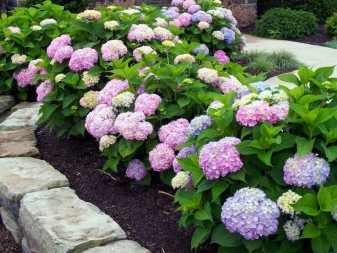
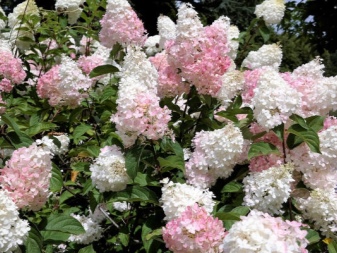
- Astilba. This shade-tolerant plant with tall panicle inflorescences grows in lush bushes with carved foliage. Astilba is distinguished by long flowering, very decorative, retains its beauty from June to September.
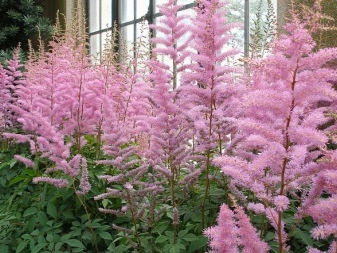
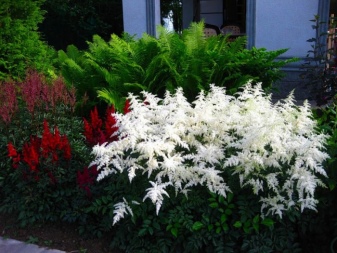
- Geranium. This shade-tolerant perennial blooms all summer, differs in a variety of shades of petals, leaf shapes, acts as a natural insecticide in border plantings. Geraniums remain decorative until autumn. Foliage changing its shades becomes an additional decoration of the summer cottage after flowering.
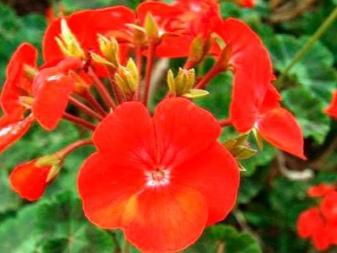
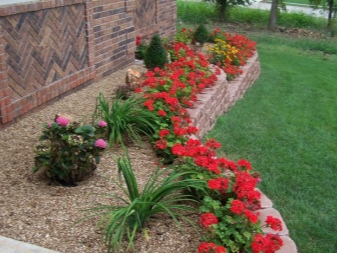
Decorating shaded areas is not difficult at all. It is enough to correctly combine plants that can bloom in such conditions.
Autumn flowers
The most beautifully flowering plants are autumn, bush plants, allowing you to turn the dacha into a real kingdom of flora. They are dominated by moisture-loving, frost-resistant varieties that are not afraid of a sharp change in weather.
- Mallows. They are especially loved by residents of the southern regions; due to their height, they are often planted in front gardens under windows. The color of mallow petals is quite varied - from juicy raspberry to snow-white.
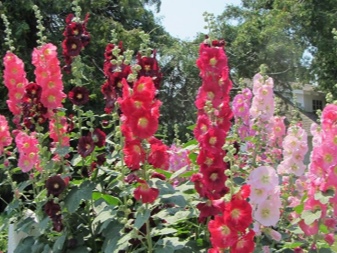
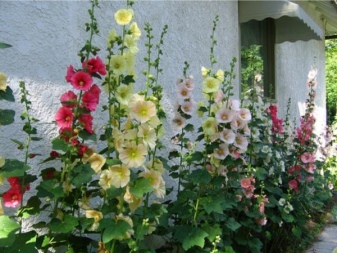
- Phlox. Unpretentious autumn flowers are rightfully considered to be a true decoration of a flower bed. They build up lush greenery until mid-summer. Then flowering begins, lasting until mid-October.
Phloxes are very diverse in color, you can find suitable varieties for a classic flower bed or planting in an alpine slide.
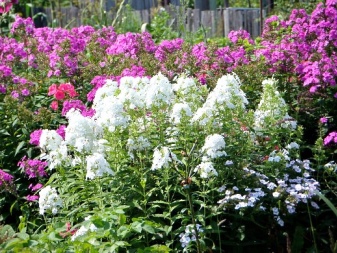
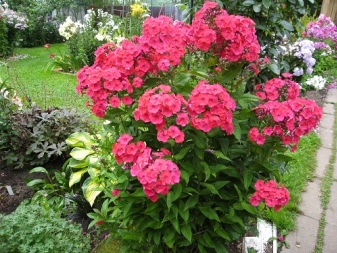
- Asters. Perennial species of this plant traditionally become the main suppliers of flowers for cut into bouquets. Lush "stars" with double petals are presented in all variety of colors - from snow-white to deep purple. Bush forms provide easy formation of borders, flower beds, fit well into group plantings.
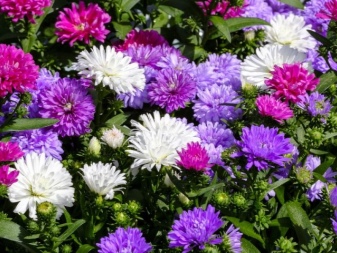
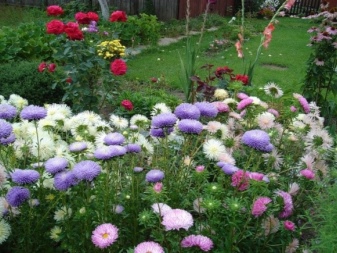
- Chrysanthemums. They are also considered more likely to be autumn flowers, although this perennial feels great in flower beds in summer. Gorgeous terry hats on sturdy stems come in a variety of shades. Chrysanthemums fit perfectly into the aesthetics of Japanese gardens; when cut into bouquets, they last up to several weeks.
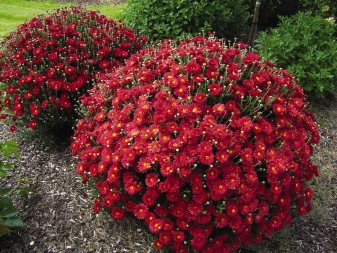

Autumn perennials are especially varied and decorative. By correctly positioning and planning their planting, you can easily provide the summer cottage with lush decoration throughout the season, until the very cold weather. Flowers chosen for fall work well for cut into bouquets.
Which ones can be planted in August and autumn?
Planting flowers in late summer and early autumn is relevant for those species that bloom in spring. Without missing the deadline, you can plan in advance a flower bed scheme that will delight the eye of a summer resident with the snow melting. When planting, it is recommended to take into account that the optimal time for it is chosen according to the weather. In a cool summer, you can start work as early as August, and in the heat it is better to move the deadline to September. The main thing is to complete the work 14-30 days before the first frost.
It is worth considering that only some plants can be transplanted with buds and flowers. These manipulations are suitable for primroses, daisies. Other species, before carrying out manipulations, get rid of unnecessary shoots.

A number of plants can be distinguished that perfectly adapt to spring flowering when planted in August and September.
- Chilean gravilat. A plant that performs well on narrow ridges and borders. Forms compact rosettes, by mid-May flower stalks up to 60 cm high appear on the shoots. When planting, you need to choose sunny and semi-shaded areas with well-moistened soil.
You can transplant young rosettes in the fall, separated from the base of an adult bush.
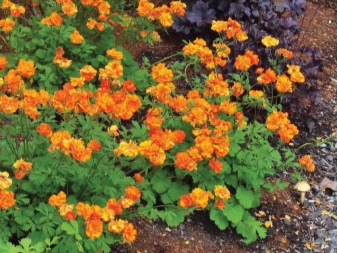
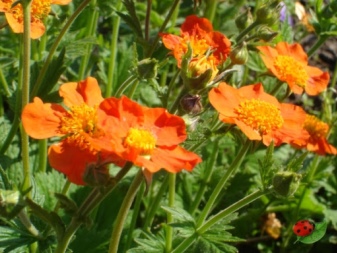
- The swimsuit is European and Asian. These flowers are also called water lilies for the similar shape of the buds. Plants are hygrophilous, grow up to 80 cm in height, do not grow too much, forming compact plantings.
In the European species, the flowers are yellow, the dates of their appearance are in mid-May. Asiatic is an earlier species with orange petals.
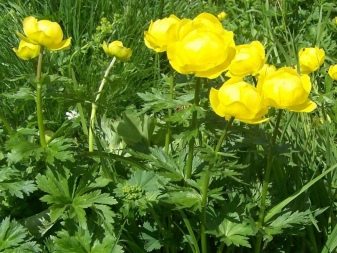
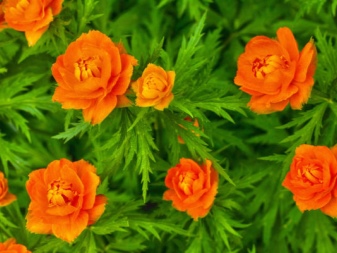
- Lily of the valley garden. This plant takes root exclusively when transplanted in August-September, other periods are not suitable for it. They bloom with beautiful snow-white "bells" at the end of May. The leaf rosette has a characteristic shape, reaching a height of 30 cm. Shady and semi-shaded places are suitable for planting.
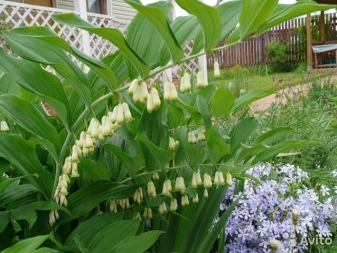
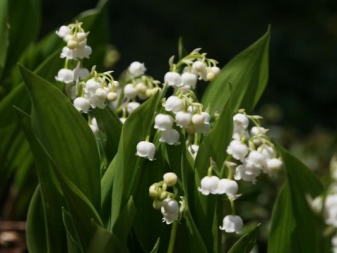
- Periwinkle. An evergreen cover plant with slender creeping stems and delicate bluish-purple flowers shows its beauty by the third decade of May.
Periwinkle hibernates well under the snow, withstands dry and humid periods without visible damage.
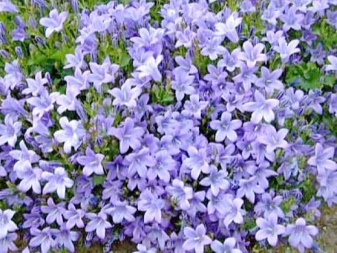
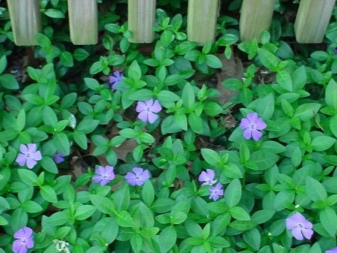
- Badan. Another type of flowering plant suitable for planting in late summer or early fall. Badan blooms in May, and throughout the year decorates the site with spectacular greenery with rounded leaves. It is unpretentious, decorative, gives slow growth on the sides, while maintaining compactness.


These plants thrive best when planted in August and September. Choosing other terms, you can not wait at all for flowering.
For example, lilies of the valley may die during spring planting. In autumn, in September-October, it is customary to transfer bulbous plants to the ground - crocuses, daffodils, tulips.
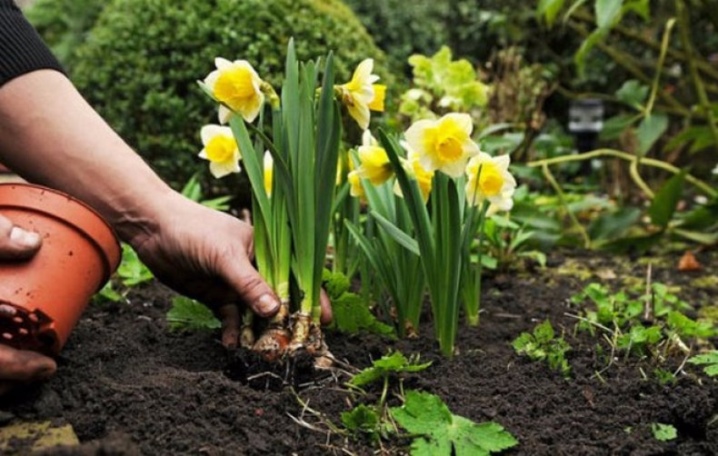
Recommendations for different regions
The choice of perennials for summer cottages must be done taking into account their possible acclimatization. Not all conditionally winter-hardy species are able to withstand the frosts of Siberia or piercing steppe winds. Each region has its own favorite plants.
Taking into account the recommendations given by botanists, it is possible to create flower beds of rare beauty in any climate.
- For cultivation in the south. Here, plants have special requirements for drought resistance, the ability to tolerate the scorching rays of the sun. The best species for this climatic zone are garden echinacea, salvia, rudbeckia, yarrow. Lavender can also be called a typical southern plant, which retains its decorative effect even in dry bouquets. Lush mallows, stock roses and sunflowers will easily decorate the adjoining territory in the country.
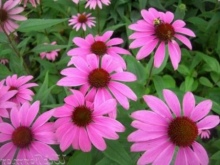
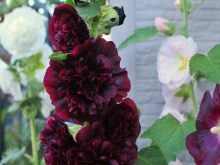
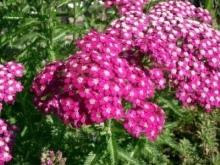
- For the middle lane. In the Moscow region and other regions similar to it in terms of climate, you can choose almost any perennials for your dacha. The meadowsweet yarrow, the brilliant rudbeckia, and the hybrid helenium feel especially good here. They look interesting on the landing site of the catchment area, hybrid Veronica.
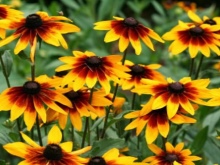
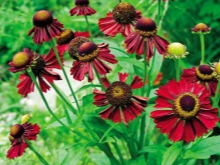
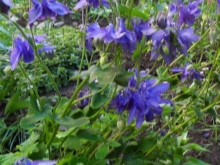
- For the northwest region. In the Leningrad region and in Karelia, the climate features require a particularly careful selection of plants. Moisture-loving perennials are popular here, capable of enduring long periods of rains that are not demanding on the abundance of the sun. In the country, you can plant carnations, roses, violets, asters and phlox. Garden lilies also do well in the northwest.
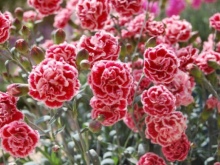
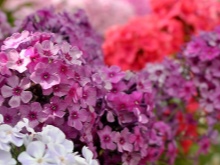
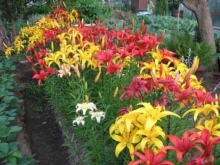
- In Siberia. It is recommended to plant frost-resistant flowering perennials here, which grow well even with a short summer. Suitable species include pansies and asters, lilies of the valley and tulips. Medium-sized variants are represented by bearded irises, Siberian kandyk, Siberian erantis.Tall plantings can be formed from phlox, present bedstraw, chrysanthemums.
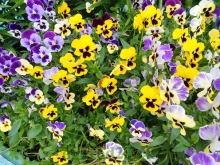
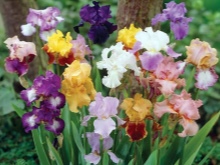

- In the Urals. Here, the climate features are more favorable to low-growing perennials, characterized by long flowering. These include pansies and seaside armeria, periwinkle and dwarf phlox. Daylily, iris, mountain cornflower, Turkish carnation take root well in the Urals.
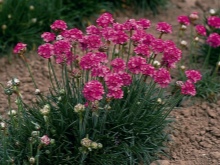
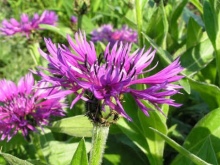

Numerous flowering plants that can grow without transplanting in one place for 5-7 seasons can be selected for almost any climatic zone. It is worth considering the basic recommendations for their cultivation in order to create the best conditions for each species.
Examples of beautiful flower beds in landscape design
The scheme for planting flowers in a flower bed largely depends on the timing of the blooming of their buds. Spring, summer and autumn perennials fully justify the hopes of summer residents, usually they are not too demanding in care. Beautiful examples will allow you to fully appreciate the various options for the layout of flower beds in areas of different sizes.
- An elegant garden arrangement of potted chrysanthemums creates the effect of a Japanese garden even in a small area. Different shades of double flowers are harmoniously combined without interrupting each other.
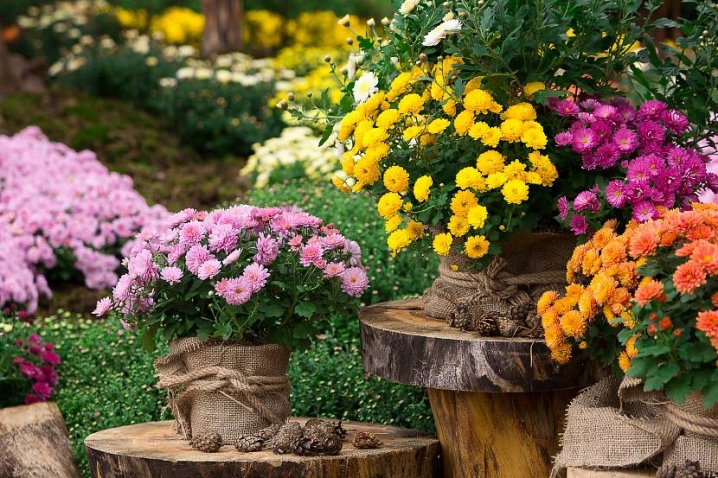
- The flower beds made up of primroses are a real decoration of the country house. Mixed plantings look great together, giving the composition a special charm.
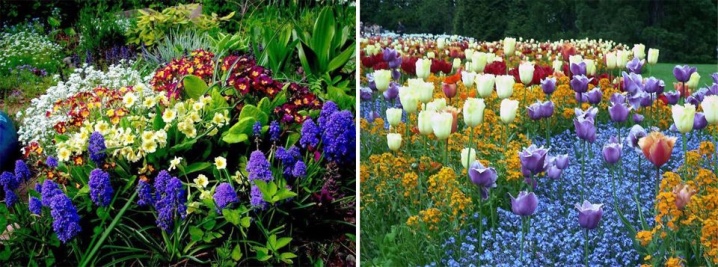
- Stylish multi-level flower bed with garden lilies, chrysanthemums and loaches on props in the background effectively complements the stonework of the background.
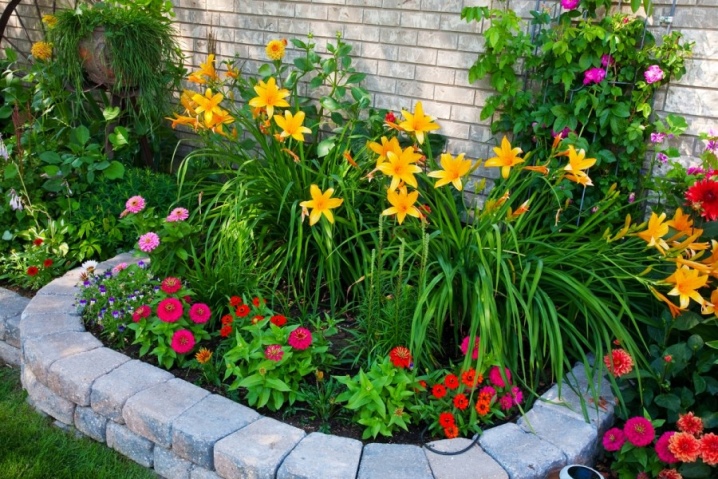
- Luxurious gladioli as the main accent of the flower bed are perfectly combined with shorter decorative deciduous and flowering plant species. In solo plantings, diversity can be achieved by combining different shades of buds in one composition.
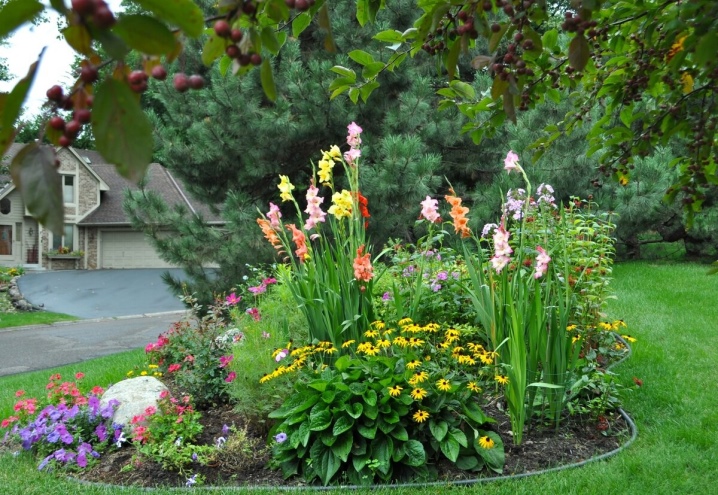







































































































What a beauty! Just lovely and feast for the eyes.
The comment was sent successfully.